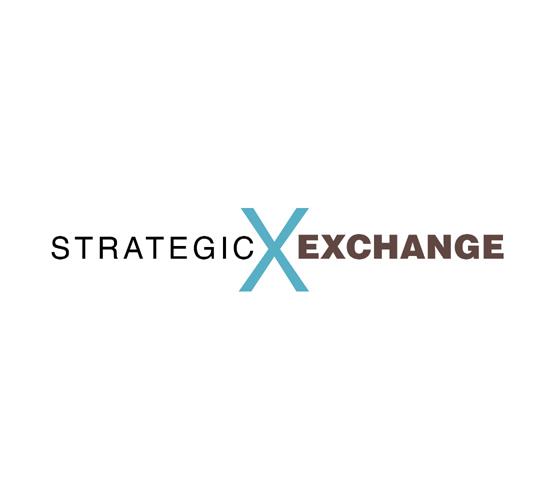Strategic Exchange: Are we just getting back to normal? - July 2022
By Kemp Harr
Times are changing, and there is plenty of economic uncertainty on the horizon. Often times, how one reacts to change is based on one’s reference point. A 6% 30-year mortgage rate seems high versus the 3% rate from two months ago, but it was commonplace prior to the last recession in 2006, and it is extremely low in comparison to the 18% rate that we saw in 1981. During Covid, the government handed out three rounds of stimulus checks, and now the Federal Reserve is trying to slow down spending-it’s no wonder we’re feeling unbalanced.
The media would have you believe that a U.S. economic recession is just around the corner. Most economists agree that this is highly unlikely. Keep these fundamentals in mind as you drown out the “impending recession” drumbeat that we’re hearing from all ten of the 24-hour news channels. Bad news is an audience-builder. The dollar continues to be strong, unemployment is low, personal income is up, the consumer is continuing to spend above their normal levels, home values are high, but there’s no evidence of a bubble. One factor that bodes well for the flooring industry: there’s far too much risk in selling your home and finding something better suited that is affordable, so staying put and remodeling is a safer bet. Let’s face it, one of the Fed’s weapons in fighting inflation is slowing demand by scaring the consumer.
Last year in the flooring industry, we saw 20% revenue growth, but everybody knew that wasn’t sustainable. Is the slowdown we are seeing in the residential replacement market just the normal summertime doldrums that we used to see prior to the pandemic? It is true that retail sales are trending down versus last year. And let’s face it, we’re still in the pandemic hangover period, so a disproportionate number of people are enjoying pent-up travel time and have pushed pause on home investments until the trips are over, and the kids are back in school.
LATEST U.S. FLOOREPORT
Santo Torcivia just released his forecast for growth in the flooring industry for calendar year 2022, and he’s calling for a 4% growth in revenue. That won’t be hard to achieve with the strength we’re seeing in the commercial, builder and multifamily businesses, coupled with the price increases we’ve had to absorb over the last 18 months. It is highly likely that unit sales will be down in every category but resilient.
Santo and I discussed this report in a recent podcast, and he has a few other observations that are worth repeating. He’s forecasting the U.S. GDP will grow 2% for the year. Consolidation within the channel will continue. Big boxes, driven primarily by Floor & Décor, will continue to take marketshare; the Millennial group is becoming more of a purchasing factor, and they aren’t familiar with the legacy flooring brands. In addition, there is a bifurcation in household income with most of the purchasing power in the lower and upper ends of the market.
UPDATE ON THE FATE OF ARMSTRONG
As we close this July issue, there’s been no announcement as to who, if anyone, will win the bid to own some or all of Armstrong Flooring’s assets as a “going concern”-which means the new owner steps in, and the business never stops operating. Unsubstantiated rumors tell us that the Asia Pacific assets have sold for a healthy bid, but the other assets are still up in the air.
It’s hard to know why the bankruptcy court has allowed so many delays in the auction process. As it stands now, the final auction will be held on July 5 and the presentation to the court on July 7. That is also about the time Debtor in Possession loans are due, so the first full week of July is when the sand runs out of the hourglass. We’ve heard that the delays for the sale of U.S. assets have been driven by the lack of compromise within the seven groups that have a voice in the decision-each with diverging interests. There are two banks, three unions, a retired employee committee and an unsecured creditors committee.
Naturally, this topic was discussed throughout the hallways of NeoCon, since the most attractive part of Armstrong’s business is its specified commercial offering, and the reputation that goes with it. Several of Armstrong’s competitors in the resilient category were being asked if they could jump in with an “or equal” product should this bankruptcy process not end well. Stay tuned.
RECENT SUPPLIER CONSOLIDATION
In the last six weeks, we’ve seen more evidence that the flooring industry is in the mature phase as suppliers consolidate. Probably the biggest from a revenue perspective is Mohawk’s acquisition of Vitromex for $293 million in cash. Vitromex is the marketshare leader in the Mexican tile business with $204 million in sales in 2021. While this move does reduce the number of global tile companies by one, it may not have a big impact on the U.S. tile business other than giving Mohawk an even larger knowledge base within the category.
The second one is Bauwerk’s acquisition of Somerset Hardwood for an undisclosed amount. Bauwerk, a Swiss company with production in Switzerland, Lithuania and Croatia, has been building the Boen brand here in the U.S., so they will now have two brands plus U.S.-based production in Somerset, Kentucky. It will be interesting to see how this European investment in the U.S. will impact the domestic hardwood business.
If you have any comments about this month’s column, you can email me at kemp@floorfocus.com.
Copyright 2022 Floor Focus
Related Topics:Armstrong Flooring, Mohawk Industries
